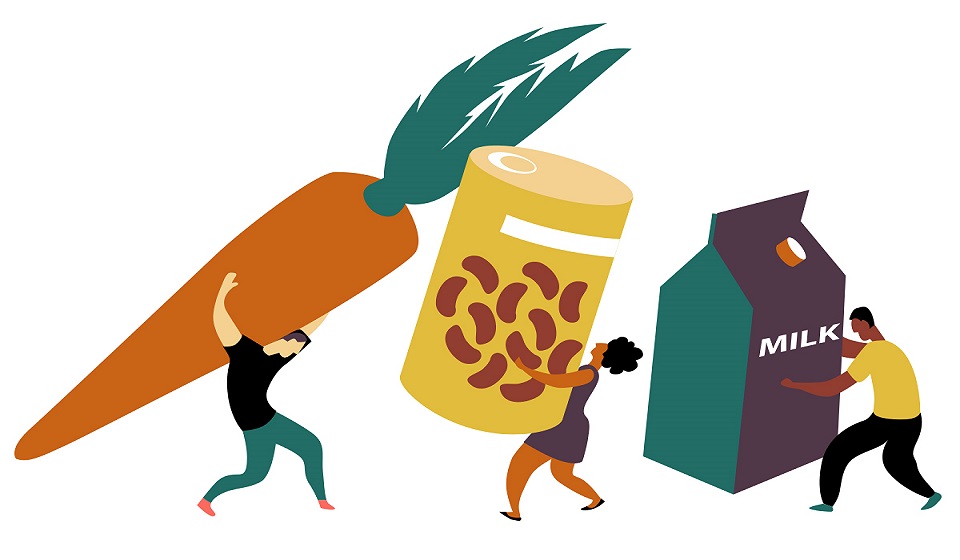
OR
Opinion
Ukraine War and Risk of Food Insecurity in Nepal
Published On: May 16, 2022 12:00 PM NPT By: Hari Prasad Shrestha

More from Author
- Why Federalism has Become Risky for Nepalese Democracy
- Hunger is a Serious Problem in South Asia
- Tourism Can Be A Catalyst For Change in Karnali Province
- Nepal’s Southern Border Has Become An Open Regional Crossroads
- Opening a new gateway for Kailash Mansarovar Yatra through Nepalgunj-GunshaNagari flight
Nepal’s agriculture sector is still in a primitive stage. If India lacks foodstuff itself and stops exporting it to us, we might be in a crisis of food insecurity. The fact that India recently banned the export of wheat is not a good sign. The Russia-Ukraine war only makes matters worse for us.
The increase in global food prices caused by the Russia-Ukraine war has seriously affected the people of developing countries, especially the poor people.
The Food and Agriculture Organization (FAO) and other food market observers have already warned of a breakdown in global food supply. The key commodities which have been badly affected by the war are wheat, corn and oil seeds, and there is expected to be more shortages and unusual price hikes of these items.
Even before the war in Ukraine, food prices were high and now they have become more volatile. According to the FAO, in the beginning of 2022, food prices were up 20 percent, compared to the previous year and now prices have further increased by 40 percent.
Before the invasion, Ukraine was the fourth-largest exporter of corn and wheat, and the world's largest exporter of sunflower oil, with Russia and Ukraine together responsible for 27 percent of the world's wheat exports and 53 percent of the world's sunflowers and seeds.
The price of natural gas is exacerbating this issue. Fertilizer producers need gas to make nitrogen-based products like urea. The soaring prices of fertilizers lead to even higher food inflation in Europe and likely food shortages in the world's poorest countries.
It is getting difficult for many governments to protect their citizens with adequate food supplies and the nations, which have borrowed heavily, are most vulnerable. As their growth slows down, hurting their currencies and making debt payments difficult, providing subsidies for food and fuel will be difficult, especially if prices keep going up.
The world is careening toward a food crisis that could affect millions of people and its effect is also visible in Nepal.
Until 1980, agriculture was the most prioritized and prestigious sector for the Nepali people especially in the plain lands of the Terai region. By that time, those possessing an adequate amount of land were considered to be high profile, rich, prestigious and landlords (Jamindars).
During the 1960s, the cereal yield in Nepal was one of the highest among the South Asian nations; the yield in Nepal was 198 percent higher than that in Bangladesh, 212 percent higher than in Sri Lanka.
In 1974, the Nepal government established seven companies specifically for exporting rice. By that time, for a decade, rice comprised 40 percent of Nepal’s total exports.
But after increasing population pressures, low productivity, difficulty to survive only through agriculture, traditional cultivation techniques completely reversed the scenario and Nepal gradually became a food importing country from a food exporting one.
Nepal spent nearly $1 billion on buying food from India alone in a year as agriculture stumbles due to faulty policies. Food import bills have grown 78 times in two decades. In total, globally, Nepal imports foodstuffs worth $ 3 billion in a year.
This is the official record of food imports. However, the unofficial or unauthorized import of foodstuffs from India is alarming. The open borders between India and Nepal, cheap food prices in India and lack of foodstuffs in Nepal are encouraging unauthorized import. Moreover, the crowds of people from Nepal visit bordering Indian markets to buy cheap foodstuff.
Approximately 45 of Nepal’s 77 districts fail to produce enough food to meet the population’s basic needs.
Food insecurity means having unreliable access to enough good, lack of healthy, and culturally appropriate foods. It has been influenced by a number of factors including income, employment, race/ethnicity, and disability. The risk for food insecurity is also based on the availability of money to buy it. Low-income households are more food-insecure, compared to the national average.
In addition, children with unemployed parents have higher rates of food insecurity than children with employed parents. Dalit, unemployed, disabled, landless households are nearly two times more likely to be food insecure than the national average. The remote mountainous terrains with difficult roads and lack of transportation are prone to food insecurity.
Hunger and food insecurities have been frequent in world history. The most common causes have been drought and war, but hunger and food insecurity were also caused by economic policies.
For example, currently the economic model of Sri Lanka based on external remittances and tourism and excess imports of foodstuffs is struggling to pay the food bills due to improper economic policy, worsened by the war in Ukraine.
High imports and low exports meanwhile could make Nepal more vulnerable to external shocks.
Nepal is among the world’s poorest countries, ranking 148th out of 189, with a Human Development Index (HDI) score of 0.574 in 2019.
Nepal’s economy relies heavily on rain-fed agriculture – its share in the GDP has been continuously declining over recent decades to below 30 percent of GDP due to inadequate infrastructure for irrigation. Paddy is the key cereal crop, which accounts for around 22 percent of agricultural GDP.
Nepal’s agriculture sector is still in a primitive stage. If India lacks foodstuff itself and stops exporting it to us, we might be in a crisis of food insecurity.
Nepal never learned lessons to be self-reliant even after many border blockades, a great earthquake, and pandemics, which created an extreme shortage of petroleum products, food, essential items and medical supplies.
Due to the low growth rate in the agricultural sector, the living standards in rural areas are deteriorating, and poverty gaps are ever widening in Nepal. In western and far western mountainous regions, food supply by the World Food Program of the United Nations and the government itself has been a yearly routine job; long queues for rice in the mountains of Nepal have been a never-ending phenomenon.
In rural areas household food security and poor nutrition are still major concerns; farmers are illiterate, have large families, and are landless or have very small landholdings.
At this moment of war, it is impossible to cultivate crops in the agriculture fields in Ukraine. And the end of the war is uncertain. Even after the end of the war, it would take years to start agricultural production there. This would make worse food crisis with its increased price effects for years to come
Therefore, the government should be on high alert for the overall development of the food sector. The government should have an efficient demand and supply information system of necessary food crops. The quantity of food required for a year, internal production, import required, quantity to be controlled by the government, international production scenario, the international prices, food storage capacity and the price policies are the major areas of concern where the government should have good statistics and program of implementation to absorb the shocks of global food crisis.
India’s cheap food price, Nepal’s liberal, uninterrupted food import policy and lowest rate of return from agriculture compared to real estate, hyper funds and unproductive sectors are also barriers to becoming self-reliant in food production for the country.
Currently in Nepal, foreign currency reserves have been affected as a result of shrinkage in remittances. However, Nepal’s economy has not been out of control and the government has implemented some import controlling measures of luxury items but still a lot of corrections have to be made in a short time to minimize the shocks of food insecurity.
You May Like This
_20201014060614.jpg)
Nepal stands in favor of Ukraine's call at UNHRC for urgent debate on Russian invasion
KATHMANDU, March 1: Nepal is among 29 countries that voted in favor of Ukraine's call at the United Nations Human... Read More...

Overcoming Covid-19 pandemic
The Covid-19 outbreak has affected people across the globe, sparing no one and no sector. In Nepal, it has taken... Read More...

Helping women re-envision a better Nepal: Women LEAD Nepal
KATHMANDU,March 7: Women LEAD Nepal started as an idea that women and girls could change the trajectory of Nepal’s future and... Read More...





Just In
- MoHP cautions docs working in govt hospitals not to work in private ones
- Over 400,000 tourists visited Mustang by road last year
- 19 hydropower projects to be showcased at investment summit
- Global oil and gold prices surge as Israel retaliates against Iran
- Sajha Yatayat cancels CEO appointment process for lack of candidates
- Govt padlocks Nepal Scouts’ property illegally occupied by NC lawmaker Deepak Khadka
- FWEAN meets with President Paudel to solicit support for women entrepreneurship
- Koshi provincial assembly passes resolution motion calling for special session by majority votes







_20220508065243.jpg)






Leave A Comment